New Restaurateurs and Stock Management Planning
A major issue for new restaurateurs is stock management. However, many don’t know that it’s a serious issue that needs to be fixed quickly. For instance, if you understock and an order comes in, you won’t be able to take it and you’ll lose the sales opportunity, or you’ll have to waste more time and money to have an employee run out and refill your stock during the day, because you might have to pay a higher price than usual. On the other hand, if you overstock, your money would just be sitting there. If you don’t manage your ingredients well, they could spoil and you’ll just end up losing money.
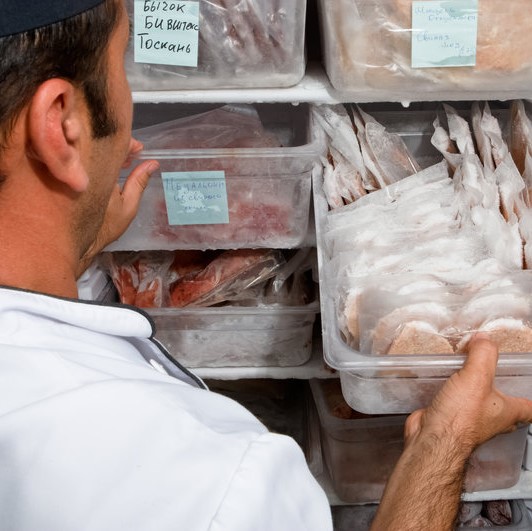
These are problems stemming from improper stock management planning or not knowing the proper stock management planning methods. Therefore, in this article we’re going to get familiar with the proper stock management planning methods to prevent understocking and overstocking. Let’s take a look.
Formula for Making a Stock Ordering Plan to Be Sufficient for Sales
In a restaurant business, good planning can easily help you reduce costs and increase profit. How to plan to order a sufficient amount of ingredients for selling is one of the first things restaurateur needs to know. In order for you to see how this is done, we’ll use an imaginary restaurant as an example.
Restaurant Type: Thai restaurant and café
Food Type: Thai fusion food, tea, coffee
No. of Menu Items: 40-50 items
No. of Beverages: 20-25 items
Seating Capacity: 50 seats
Opening Hours: 11.00 a.m. – 9.00 p.m.
No. of Employees: 8 employees
Monthly Sales Target: 500,000 baht
Let’s look at how this restaurant can plan to order a sufficient amount of stock for its sales. You can adapt the concept to make it suitable for your own restaurant. The heart of the stock ordering plan is in the sales data. You’ll have to add that to the table for the stock ordering plan. You can download the table and add the data for your restaurant along with this article’s examples. (You can download the table from this link )
The advantage of entering data into this table is so that you can know the total sales for each menu item for each day. That way, you can order enough ingredients to sell. It might seem a bit complicated, but if you do it until you understand it, it’ll instantly become easy!
From the examples in the table, you’ll see the menu items are categorized so that it’s easy to enter the data, but, most importantly, you have to enter every menu item your restaurant offers. The table will be separated into sections.
Section 1 is the menu items.
Section 2 is the monthly sales in plates.
Section 3 is the average daily sales.
Calculation formula: Take the number of plates sold for the month, divide it by thirty (days) and you’ll get the average daily sales for each menu item.
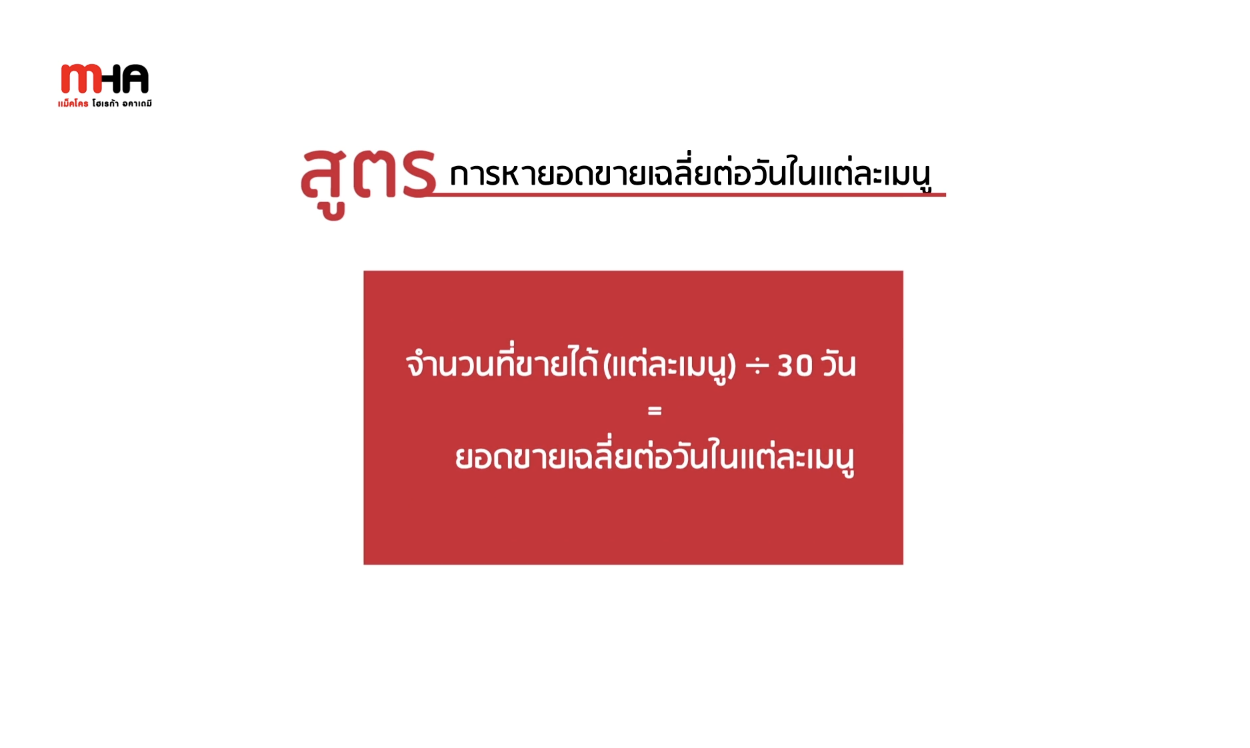
You should find the average value for at least three months since the sales total aren’t the same for every month. If you use the value from the best-selling month, there could be an error. To calculate the values for the previous three months, divide each menu item’s sales by ninety (days) and you’ll get the average daily sales for each menu item.
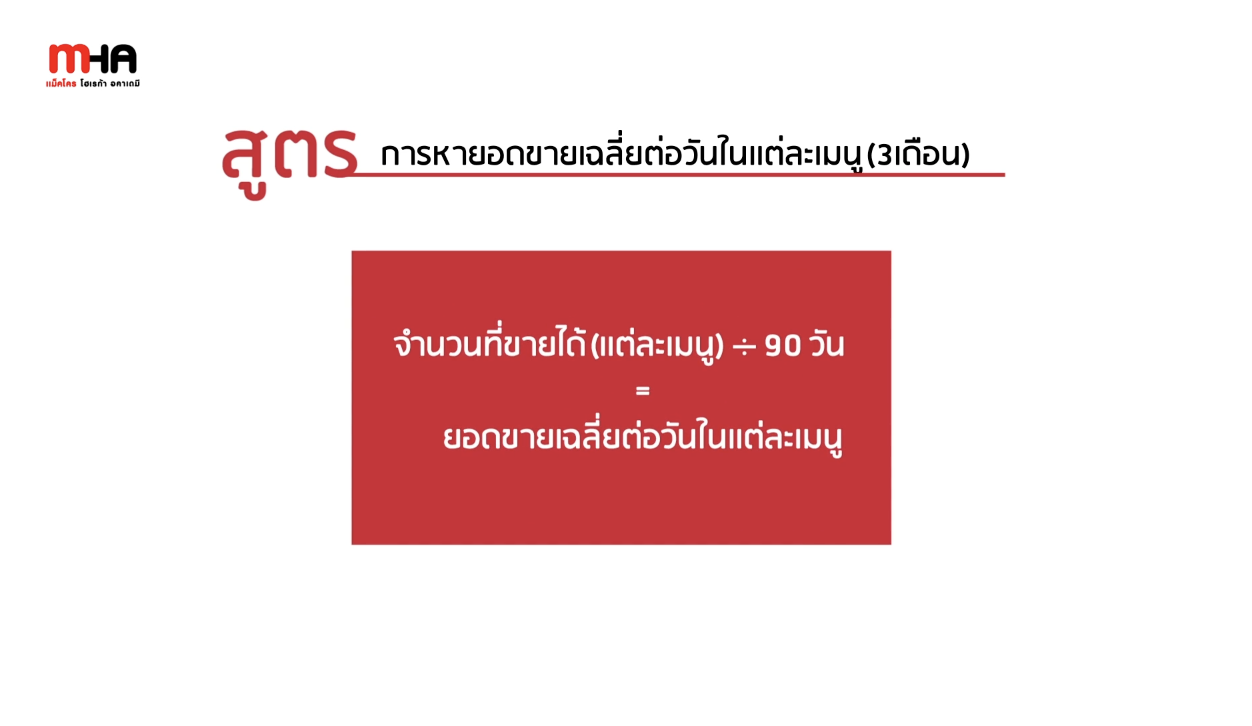
Section 4 is where you input the ingredient usage for each menu item, for example, the weight of the meat used per plate. The section for the amount of meat used per day can be calculated as follows:
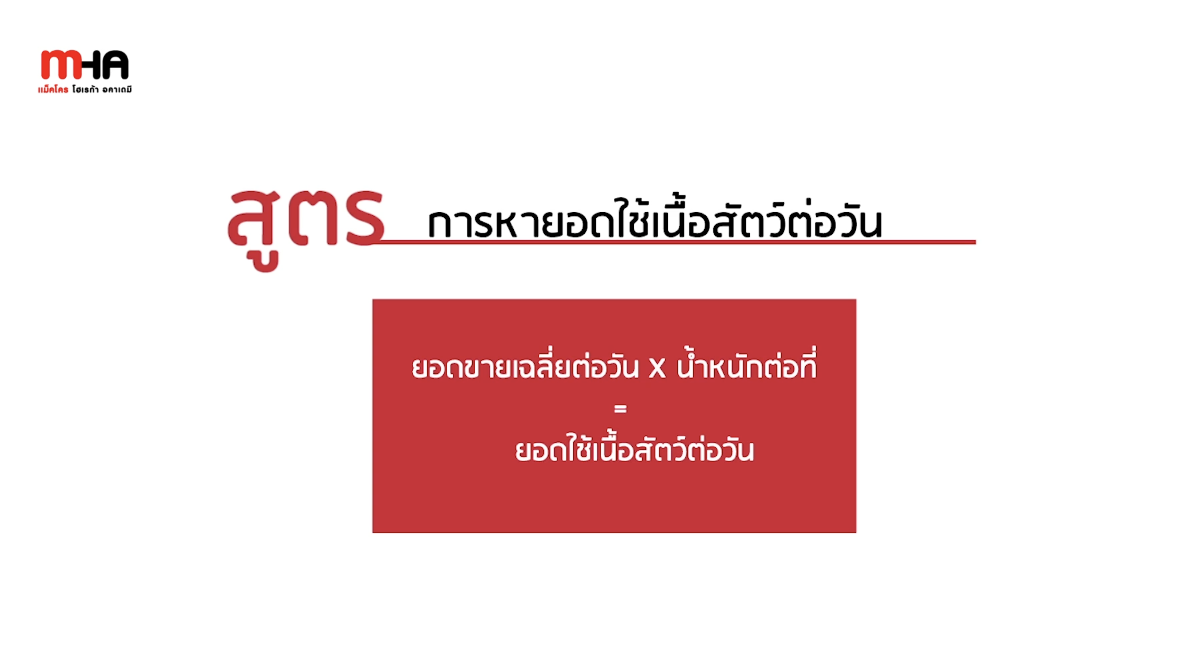
Example: Fried Chicken Wings. The number of plates sold per day is three. The amount of chicken wings used per plate is 150 grams. That means the restaurant uses an average of 450 grams of chicken wings per day.
Another Example: Fried chicken lab. This restaurant sells sixty plates per month. The average daily sales is at two plates. The amount of chicken meat used per plate is 120 grams. Each day, this restaurant uses an average amount of chicken of 240 grams, etc.
Add the amount of all the meat used per menu item and you’ll get the amount of ingredients you need for each menu item per day. If any ingredient is used repeatedly, add the amount for each item together and you’ll get the total amount of ingredient you need per day. Nonetheless, you should prepare 20 – 30% more of the ingredients than the calculated amount since each day’s sales might not be the same.
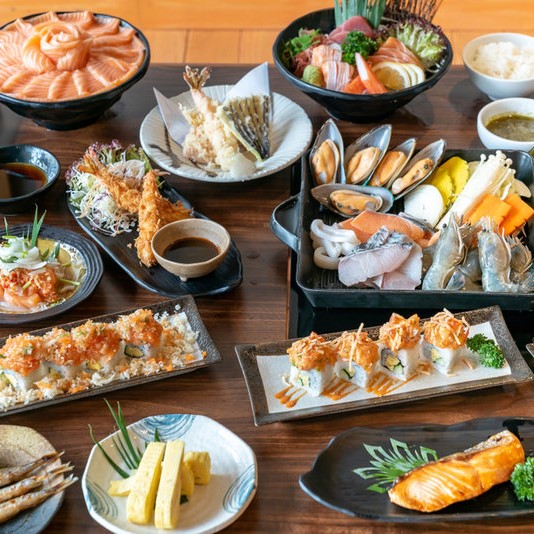
Do you see that it’s not hard to make a stock ordering plan that will be sufficient for your sales? You just have to change your behavior. From buying ingredients by estimating the amount, you should use your average sales total to determine how you buy. This can help your restaurant to have enough ingredients for each day’s sales.
This is just a part of how to manage your stock. As you can see, your stock is connected to your costs and sales. Let’s just say, if your restaurant knows how to manage your stock, you’ll see profit. You can learn more about stock management in MHA’s free course instructed by Ajarn Mathurot “Bow” Wongpradu, Director of PRCM Thailand, a restaurant consulting and set-up business.
Click to read more articles here:
- If You Open a Restaurant Today, How Many Months Will It Take to Recover the Capital? Information Entrepreneurs Should Know!
- Limit Budgets to Ensure Business Survival! Use Investment Planning Techniques before Opening a Restaurant
- Your Restaurant’s Been Open for a Month and You’ve Got Negative Numbers! Do You Give Up or Keep Going?
- How to Start Filing Tax Documents After Opening a Restaurant
- Check Your Status Now! Is Your Restaurant in a Crisis? Use P&L to Find Out!
Click to read interesting articles from Makro Horeca Academy:



